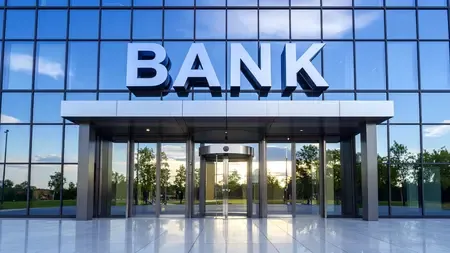What Led to the 1.4% Increase in SCBs' Net Profit in Q2FY26?

Synopsis
Key Takeaways
- Net profit of SCBs increased by 1.4% year-on-year.
- PSBs saw a significant profit rise due to fee income and credit growth.
- PVBs faced challenges with a 2.1% decline in profits.
- Future profitability is anticipated to improve in H2FY26.
- Elevated deposit costs are impacting overall bank performance.
New Delhi, Nov 28 (NationPress) The net profit of Scheduled Commercial Banks (SCBs) witnessed a slight increase of 1.4 percent year-on-year in Q2FY26, primarily fueled by fee income, a reduction in provisions, and managed operating expenses, despite a squeeze in margins, as detailed in a report released on Friday.
Sequentially, SCBs' net profit rose by 2.5 percent to reach Rs 0.94 lakh crore during Q2FY26. Among these, Public Sector Banks (PSBs) reported a 4.7 percent year-on-year increase in net profit, totaling Rs 0.50 lakh crore, whereas Private Sector Banks (PVBs) experienced a 2.1 percent decline, amounting to Rs 0.44 lakh crore, according to the report by CareEdge Ratings.
The profitability surge for PSBs is largely attributed to fee income and treasury gains, along with an expansion in credit within the retail and MSME sectors, and a normalization of operating costs.
Moreover, the impact of recent stake sales is expected to enhance the profits of major PSBs by 8.9 percent year-on-year. Conversely, PVBs are grappling with sluggish corporate loan demand, stagnant interest income growth, ongoing challenges in the microfinance and unsecured loan sectors, and heightened provisions.
Incorporating a one-time regulatory provision, PVBs' net profit would have further declined by an additional 4 percent year-on-year.
The return on assets for SCBs was recorded at 1.29 percent, annualized in Q2FY26, reflecting a decline of 11 basis points year-on-year, primarily due to margin pressures stemming from rate reductions.
On a sequential basis, this figure improved by one basis point, attributed to a slight uptick in PSB margins during the quarter, coupled with business growth and an overall enhancement in asset quality.
Sanjay Agarwal, Senior Director at CareEdge Ratings, commented that the fundamental operating performance of SCBs is still under strain, as elevated deposit costs and slower CASA mobilization are hindering NII and NIM growth.
The ratings agency anticipates that profitability will rebound in the second half of FY26, driven by increased demand during the festive season, credit growth, the advantages of a lower CRR requirement, and a gradual normalization of slippages in unsecured and microfinance segments.









